Publication
Article
Pharmacy Careers
RESPy Recap 2010
Pharmacy Times and Walmart are celebrating the fifth successful year of the RESPy (Respect, Excellence, and Service in Pharmacy) Award. Pharmacy Times and Walmart have partnered to present the RESPy Award to extraordinary pharmacy students who have made a difference in their communities by demonstrating excellence in pharmaceutical care and advancing the profession of pharmacy. Ron Chomiuk, vice president at Walmart Pharmacy Operations stated, “Pharmacy students are the future of our profession, and those selected for this award demonstrate that they are embracing these values through service to their community and will continue to act on these values as pharmacists.” Pharmacy Times and Walmart would like to congratulate all the 2010 winners!
January 2011

Timmellyn Buchanan The University of Oklahoma College of Pharmacy
For Timmellyn Buchanan, a career in pharmacy has been a passionate calling since she was a teenager. “I love the opportunity to help people, and my pharmacy knowledge provides a very tangible way to help meet the needs of all types of people around the world,” said Buchanan.
As chair of the Third Annual City Rescue Mission (CRM) Homeless Health and Safety Fair, Buchanan organized volunteers, services, and information to benefit the homeless population in her community. Buchanan’s work also led to the inclusion of a new children’s program and an expanded focus on women’s health at the fair.
Buchanan used her leadership skills to create opportunities for peers to help in ways big and small, including helping to establish a chapter of Christian Pharmacists Fellowship International (CPFI). In her role as CPFI president, Buchanan organized the first annual campus-wide Student Weekend Retreat at the CRM, during which students and faculty worked at the Mission. As Phi Lambda Sigma president, Buchanan organized monthly seminars for students and provided valuable resources about volunteering.
Buchanan is considering a community residency to help prepare her for a career as an independent pharmacy owner. She plans to own and operate a pharmacy in a rural area, where she can be a vital part of the community and make a positive impact on patients.
February 2010

Shadi Clark University of Utah College of Pharmacy
Shadi Clark decided on pharmacy after a rewarding experience shadowing an oncology pharmacist as an undergraduate. “I realized the positive impact pharmacists have not only in the community, but in the health care team. After that experience, I knew that I wanted to be a part of that team and help influence patient care,” said Clark.
Clark is president of the University of Utah chapter of the American Pharmacists Association Academy of Student Pharmacists (APhA-ASP), and serves as chair of the Operation Immunization, Operation Diabetes, and heartburn awareness committees. Inspired by a trip to the APhA-ASP Summer Leadership Institute, Clark worked with classmates to organize the first annual pharmacy gala and charity auction, which raised over $12,000 for the Maliheh Free Clinic in Salt Lake City. After the event, Clark began volunteering at the clinic, where she spent hours providing prescription assistance, counseling patients, and taking medication histories.
Clark also worked to educate Utah residents about diversion and abuse. She founded a student group—the Utah Student Committee on Drug Abuse Education— to teach teens about the dangers of prescription drug abuse. The group attended Utah Department of Health meetings about the topic and developed a PowerPoint presentation, which they currently give to local high school and junior high school students.
Clark plans to complete a residency after graduation.
March 2010
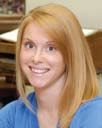
Kristen Zeitler University of Buffalo School of Pharmacy
Kristen Zeitler learned that pharmacy appealed to her while working at a hospital pharmacy during her school breaks. “I began to discover the interest I had for drugs, how they work in the human body, and how they are life-saving for patients who need them relevant to their specific disease states,” she says.
Zeitler was a leader in the Erie County Drug Disposal Program, which successfully collected 6800 doses of prescription drugs. To help promote safe handling of drugs that remain in the household, Zeitler volunteered with the University of Buffalo (UB) Poison Prevention Program. In this program, UB pharmacy students give presentations to elementary school students and provide information to parents to help prevent accidental household poisoning.
As chair of Operation Immunization for UB’s chapter of the American Pharmacists Association Academy of Students of Pharmacy, Zeitler promoted the increasing role that pharmacists are playing in administering immunizations.
Zeitler coordinated several events that connected UB School of Pharmacy students with state politicians. Zeitler organized an on-campus event during which 5 members of the New York State Assembly met with UB PharmD students. Zeitler also coordinated a video on health care reform for Senators Charles Schumer (D, NY) and Kirsten Gillibrand (D, NY) and Congressman Chris Lee (R, NY).
After graduation, Zeitler plans to pursue a PGY-1 residency in a hospital or institutional setting.
April 2010
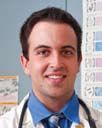
Michael Geisler Southern Illinois University-Edwardsville
Michael Geisler was drawn to pharmacy after he took a class in human biology and fell in love with the coursework. An advisor suggested he channel that scientific interest into pharmacy.
Geisler is a member of the American Pharmacist Association Academy of Student Pharmacists (APhA-ASP) and 6 other professional organizations, including the Illinois Pharmacists Association and the Illinois chapter of the Student Society of Health-Systems Pharmacy. An accomplished fundraiser, he helped raise money through the Asthma, Diabetes, and Celebrating Disabilities Walks, as well as coordinating the APhA-ASP Trivia Night Fundraiser.
Geisler was named a Community Outreach Project Meridian Award proposal and presentation winner for his innovative proposal that took a holistic approach to increasing appropriate health care awareness by providing blood pressure screenings and education on hygiene, nutrition, poison prevention, and physical fitness.
During his internship for the Department of Human Services Bureau of Pharmacy, Geisler implemented improvements to the Illinois Prescription Monitoring Program Web site, called the Prescription Information Library (PIL). The PIL tracks all Schedule II, III, IV, and V prescriptions dispensed by Illinois retail pharmacies, and allows Illinois pharmacists to view a patient’s prescriptions for the past 6 months to help monitor for drug diversion and abuse.
Geisler aspires to work with patients one-on-one to provide disease state management, counseling, and other clinical services.
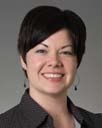
Kim Moody took a “very long road to pharmacy school.” Beginning work as a pharmacy clerk as a high school student in 1998, she was a technician in a pharmacy and in the biotechnology industry before entering pharmacy school.
Moody values the experience of volunteer work greatly, and helped found an organization to promote student involvement in community outreach called Bridges to Health. Moody volunteered at numerous health fairs, diabetes clinics, and immunization fairs. She also coordinated student volunteers for the “Tackle Hypertension” program, which provided blood pressure screenings to fans at Seattle Seahawks football games. Moody said her work at the Salvation Army of King County Adult Rehabilitation Center (ARC) was her most rewarding service activity. She served as the student coordinator for the second annual Salvation Army ARC health fair and volunteered to provide flu shots at their immunization clinic.
Moody knows that community members are not the only ones who need assistance maintaining a healthy lifestyle. Moody codirected Wellness Challenge—a health-promoting program specifically for pharmacy students. Using a medication therapy management model, Wellness Challenge helps students make better choices in the areas of nutrition, exercise, and smoking cessation.
Moody accepted a position as associate director of clinical services for Strategic Pharmacy Innovations, and will work part time as a clinical pharmacist at Highline Medical Center in Burien, Washington.
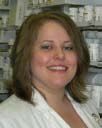
Leah Snyder has a passion for diabetes education and management. In her first year of pharmacy school, Snyder participated in a blood glucose screening that showed her the impact she could have on patients with diabetes—and her fate was sealed.
Snyder spearheaded an innovative new diabetes program in her local community. During her second year in pharmacy school, she created and coordinated “The Low-Sugar Showcase,” an event where local restaurants highlighted diabetic-friendly foods. The event also included free blood glucose screening, body mass index testing, foot screening, blood pressure screening, and a variety of educational booths. She found it was satisfying to work with patients with diabetes to help them reach their target goals.
Snyder also volunteered at a shelter after Hurricane Gustav to help provide displaced people access to their medications. “This was a very challenging time—figuring out how to help people who had nothing,” she said. Snyder also served as president of the University of Louisiana at Monroe College of Pharmacy’s Student Council, and belongs to a variety of professional associations, including the Louisiana Pharmacists Association and the Louisiana Society of Health-Systems Pharmacists.
Snyder plans to become a certified diabetes educator and board certified in advanced diabetes management. She wishes to work with patients in a community setting to provide diabetes education and care.

Tina Patel is a second-generation pharmacist—her father has owned a community pharmacy for more than a decade. A PharmD/ master of public health (MPH) candidate at the University of Southern California (USC), Patel will graduate in 2012 with a dual degree that will help her follow in his footsteps and improve health care opportunities for underserved patients.
Patel has been interested in uniting pharmacy and public health since her first semester at USC. Patel participated in numerous health fairs and clinics, including the Weingart Center Smoking Cessation Program, a 10-week program during which she provided homeless individuals with nicotine replacement therapy and cognitive behavioral therapy to help them quit smoking.
Patel cofounded and codirected the PharmSC Clinic, the first student-run free clinic in the school’s history. Created in response the needs of the local population, the clinic provides health care screenings and patient education, as well as medication reviews, Medicare Part D information sessions, medical clinic referrals, and bilingual patient handouts. Patel was instrumental both in developing the services of the clinic and in gathering pharmacy student volunteers.
Patel says of the venture, “To date, over 100 patients have been seen at the clinic, many of whom have been screened, referred, and counseled for chronic conditions. Seeing the trust that the patients have in my profession reinforces my motivation to become a pharmacist.”

Eliza Dy chose pharmacy because it allows her to put a human touch on her love of the sciences. Dy has had a big impact on the Butler University College of Pharmacy and Health Sciences (COPHS) campus and the surrounding Indianapolis, Indiana, community.
Dy was cofounder of the Smoke Free Butler Initiative, a student-led drive to limit smoking on the university’s campus and improve the health of the college community. She helped gather more than 750 signatures in support of the measure and met with university officials to implement the plan. Dy saw smoking restrictions from the Smoke Free Butler Initiative implemented in the fall 2010 semester.
The creation of the Butler University Community Outreach Pharmacy (BUCOP) also stands out among Dy’s accomplishments. As its founding committee chair, Dy helped create this student- led pharmacy to provide free medication and counseling to underserved patients. Working in conjunction with a student-run health care clinic staffed by students from the Indiana University School of Medicine, BUCOP both helps pharmacy students practice their clinical skills and improves the lives of Indianapolis residents in need.
Dy plans to complete a pharmacy residency in the short term. Her longterm professional goal is to practice as a clinical pharmacist while also working with pharmacy students as a lecturer, preceptor, and advisor.

Anusha Raju has been inspired by her interactions with independent pharmacists. Raju’s father is an independent pharmacy owner, and she grew up watching him personally care for a patient population that did not speak English. This early experience was reinforced by Raju’s recent work in an independent pharmacy through her school’s co-op program, where patient care was also the primary focus. “That’s when I realized that I could be a care provider and also have a patient-centered relationship,” she reflected.
Raju spent 4 months in Tanzania learning how pharmacy and medicine are practiced in a third-world country. She educated the local population, including schoolchildren, on HIV prevention and nutrition and taught medical employees about telemedicine. The experience showed Raju how pharmacists can have an impact on public health, and reinforced her desire to make a difference in her own community.
Of all her extracurricular activities, Raju said the most rewarding was volunteering at the Boston Museum of Science, because that was where she first discovered her love for teaching. “I was able to teach visitors about how different organs worked, encourage discussions about evolution, and research new exhibits,” she said.
Raju plans to be a full-time faculty member with a clinic site in the ambulatory care setting, which will allow her to impact the lives of patients and also teach and inspire future pharmacists.
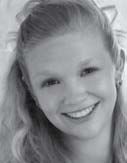
Lauren Simonds’ dedication to community service is not an exercise in resume building—she truly cares about improving health care for the underprivileged. Simonds has already used her pharmacy expertise to make a huge impact with needy populations.
In 2009, Simonds initiated the Pharmacists for Foster Kids Project, which helps empower foster parents to better manage their foster children’s medications. “Many are unaware that children in foster care are the most vulnerable to experiencing poor health compared with any other group of children in the United States,” Simonds said. Pharmacy students participating in the project have educated foster parents about asthma and the proper use of nebulizers, distributed first aid kits, and developed patient education materials on asthma in both English and Spanish.
On an alternative spring break program, Simonds and a group of health sciences students from MCPHS travelled to South Dakota to work with a nonprofit organization on a Lakota reservation. There she encountered a population who lived in near thirdworld conditions. Surprisingly, there was not a single community pharmacy available to residents, even though the reservation spans more than 2 million acres. During her time on the reservation, Simonds helped provide health care services, repair trailer homes, and build outhouses.
Simonds is particularly interested in ambulatory care and pediatric pharmacy and plans to pursue a residency after graduation.
For more information about the RESPy Award, visit www.PharmacyTimes.com/RESPy.







